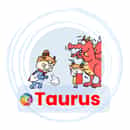Anti-MCP-1/CCL2 monoclonal antibody
The Alternative Names of target: MCP-1, CCL2,C-C motif chemokine 2,HC11, Monocyte chemoattractant protein 1, Monocyte chemotactic and activating factor (MCAF), Monocyte chemotactic protein 1 (MCP-1), Monocyte secretory protein JE, Small-inducible cytokine A2,HC11,MCAF,MCP1,MCP-1,SCYA2,GDCF-2,SMC-CF,HSMCR30
Pre-made anti-MCP-1/CCL2 monoclonal antibody (mab)-benchmark antibody for ELISA, affinity binding assay, drug discovery and mechanism of action (MOA) research.
 Go
to MCP-1/CCL2 products collection
>>
Go
to MCP-1/CCL2 products collection
>>
(antibodies,
antigen, VLP, mRNA, ORF viral vector, etc)
Product information
| Catalog No. | Product Name | Species Reactivity |
|---|---|---|
| GM-Tg-hg-T11309-Ab-1/ GM-Tg-hg-T11309-Ab-2 | Anti-Human MCP-1/CCL2 monoclonal antibody | Human |
| GM-Tg-rg-T11309-Ab-1/ GM-Tg-rg-T11309-Ab-2 | Anti-Rat MCP-1/CCL2 monoclonal antibody | Rat |
| GM-Tg-mg-T11309-Ab-1/ GM-Tg-mg-T11309-Ab-2 | Anti-Mouse MCP-1/CCL2 monoclonal antibody | Mouse |
| GM-Tg-cynog-T11309-Ab-1/ GM-Tg-cynog-T11309-Ab-2 | Anti-Cynomolgus/Rhesus macaque MCP-1/CCL2 monoclonal antibody | Cynomolgus/ Rhesus macaque |
| GM-Tg-felg-T11309-Ab-1/ GM-Tg-felg-T11309-Ab-2 | Anti-Feline MCP-1/CCL2 monoclonal antibody | Feline |
| GM-Tg-cang-T11309-Ab-1/ GM-Tg-cang-T11309-Ab-2 | Anti-Canine MCP-1/CCL2 monoclonal antibody | Canine |
| GM-Tg-bovg-T11309-Ab-1/ GM-Tg-bovg-T11309-Ab-2 | Anti-Bovine MCP-1/CCL2 monoclonal antibody | Bovine |
| GM-Tg-equg-T11309-Ab-1/ GM-Tg-equg-T11309-Ab-2 | Anti-Equine MCP-1/CCL2 monoclonal antibody | Equine |
Size: 1mg | 10mg | 100mg
Product Description
| Catalog No. |
GM-Tg-hg-T11309-Ab-1/ GM-Tg-hg-T11309-Ab-2;
GM-Tg-rg-T11309-Ab-1/ GM-Tg-rg-T11309-Ab-2;
GM-Tg-mg-T11309-Ab-1/ GM-Tg-mg-T11309-Ab-2; GM-Tg-cynog-T11309-Ab-1/ GM-Tg-cynog-T11309-Ab-2; GM-Tg-felg-T11309-Ab-1/ GM-Tg-felg-T11309-Ab-2; GM-Tg-cang-T11309-Ab-1/ GM-Tg-cang-T11309-Ab-2; GM-Tg-bovg-T11309-Ab-1/ GM-Tg-bovg-T11309-Ab-2; GM-Tg-equg-T11309-Ab-1/ GM-Tg-equg-T11309-Ab-2 |
| Products Name | Anti-MCP-1/CCL2 monoclonal antibody |
| Format | mab |
| Target Name | MCP-1/CCL2 |
| Protein Sub-location | Secreted Protein/Potential Cytokines |
| Category of antibody | Therapeutics Target, Immuno-oncology Target, INN Index, Cytokine Target |
| Derivation (species) | Mouse |
| CH1+2+3 Isotype (Receptor identification) |
IgG |
| Type of Light Chain (VD-LC) | N/A |
| Expression platform | Mammalian Expression |
| Bioactivity validation | Binding affinity is validated by ELISA with recombinant soluble protein antigen. The potency in neutralizing, inhibiting or blocking of the target protein is not detected. |
| Tag | Fc |
| Products description | Pre-made anti-MCP-1/CCL2 monoclonal antibody(mab) is expressed by mammalian cell line as a benchmark antibody for cell culture, ELISA or other affinity binding assay or functional assay development, animal model development, PK/PD model development (Pharmacokinetics & Pharmacodynamic) |
| Purity | Purity: ≥95% (SDS-PAGE) |
| Application | Biological drug disovery including cell culture, assay development, animal model development, PK/PD model development (Pharmacokinetics & Pharmacodynamic) and mechanism of action (MOA) research. |
| Formulation & Reconstitution |
Lyophilized from GM's Protein Stability Buffer2
(PSB2,Confidential Ingredients) or PBS
(pH7.4); For PSB2, reconstituted with 0.9% sodium chloride; For PBS, reconstituted with ddH2O. |
| Storage | Store at -20℃ to -80℃ under sterile conditions. Avoid repeated freeze-thaw cycles. |
Reference
Data/case study
Click to get more Data/Case study about the product.
About Gmab


GMab, developed by GeneMedi, constitutes an
advanced library of recombinant
monoclonal antibodies, each meticulously
designed to target specific molecular
entities. Leveraging the sophisticated
capabilities of GM’s Taurus™ and LIBRA™
platforms, GMab synthesizes antibodies
characterized by high binding affinity,
exceptional physicochemical stability, and
optimal developability profiles.
Through
expression in mammalian cell lines, GMab has
been established as a paradigmatic
reference antibody. It holds significance in
myriad domains of biological drug
discovery, encompassing cellular cultivation,
innovative assay methodologies,
strategic animal model systematization, in-depth
pharmacokinetic & pharmacodynamic
(PK/PD) modeling, and intricate mechanism of
action (MOA) investigations.






 Facebook
Facebook LinkedIn
LinkedIn Twitter
Twitter

Comments
No comments yet.